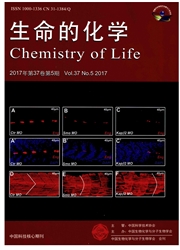

 中文摘要:
中文摘要:
目的:检测小鼠组织中受体相互作用丝氨酸/苏氨酸蛋白激酶家族(RIPs)表达谱,并检测RIP3在大鼠心肌细胞缺氧损伤后的表达。方法:①采用荧光实时定量PCR分别检测RIPs家族基因在小鼠组织(心、肝、肺、肾、脑、小肠、骨骼肌、脾和主动脉)中的mRNA表达谱,并采用Westernblot进一步检测RIP3在小鼠组织的蛋白表达谱。②将培养的大鼠心肌细胞分为缺氧组和对照组,缺氧组置于缺氧环境中培养48h,采用westernblot检测其中RIP3的表达变化。结果:①mRNA水平:RIPImRNA在脑组织中表达最高,心脏、肺、肾、骨骼肌较低;RIP2在心脏和肺表达量较其他组织高;RIP3在肠中表达较其他组织高出4倍以上,脑组织中未检测到RIP3表达;RIP4的表达以肺最高,而骨骼肌、脑和血管中表达量低。②蛋白水平:在小鼠组织中,RIP3表达以脑、骨骼肌中最高,心脏、肝、肺中表达较低。③培养的大鼠心肌细胞中,缺氧组心肌细胞的RIP3表达量显著高于对照组(P〈0.05)。结论:RIPs在小鼠组织中呈现差异表达,而在培养的大鼠心肌细胞缺氧损伤后RIP3表达升高。
 英文摘要:
英文摘要:
Objective: To detect the expression profile of receptor interacting proteins (RIPs) in mouse tissues, and to detect the expression of RIP3 in rat's myocardial cells with hypoxia injury. Methods:① We detected the expression profile of RIPs family in mouse tissues (heart, liver, lung, kidney, brain, intestine, skeletal muscles, spleen and aorta) by real-time fluorescent quantitative PCR, then detected the expression profile of RIP3 protein. ② The myocardial cells of rat were divided into hypoxia group and control. We treated the first group for 48 h on hypoxia to obtain hypoxia injured models, then quantitated the expression of RIP3 by western blot. Results:③ On mRNA level, the expression of RIP1 was highest in brain, but lower in heart, lung, kidney and skeletal muscle; the expression of RIP2 was higher in heart and lung than other tissues; RIP3 in the intestine was 4 times higher than other, but it was very low expression in brain; the expression of RIP4 was highest in lung, and was lowest in skeletal muscle, brain, spleen, and vessel. ④ Western blot results showed the expression of RIP3 at protein level. It was higher expressed in brain, skeletal muscle, however, lower in heart, liver and lung. ⑤After treated on hypoxia, RIP3 of hypoxia group was significantly higher than control in the cultured rat myocardial cell(P〈0.05). Conclusions: The expression of RIPs represented various level in mouse tissues. RIP3 increased in rat myocardial cells under hypoxia injured condition.
 同期刊论文项目
同期刊论文项目
 同项目期刊论文
同项目期刊论文
 期刊信息
期刊信息
